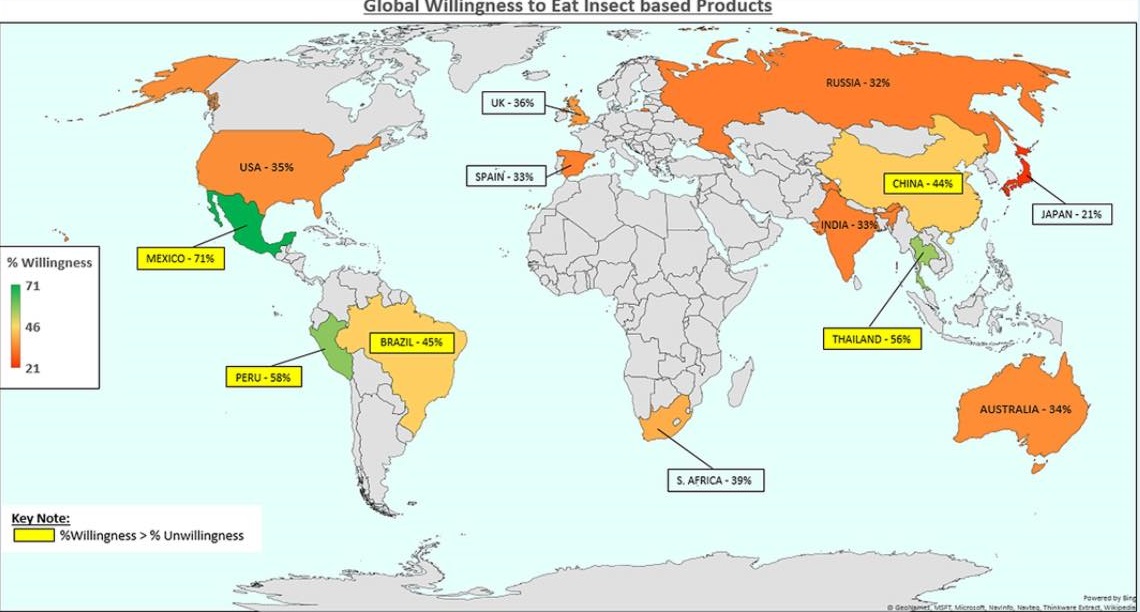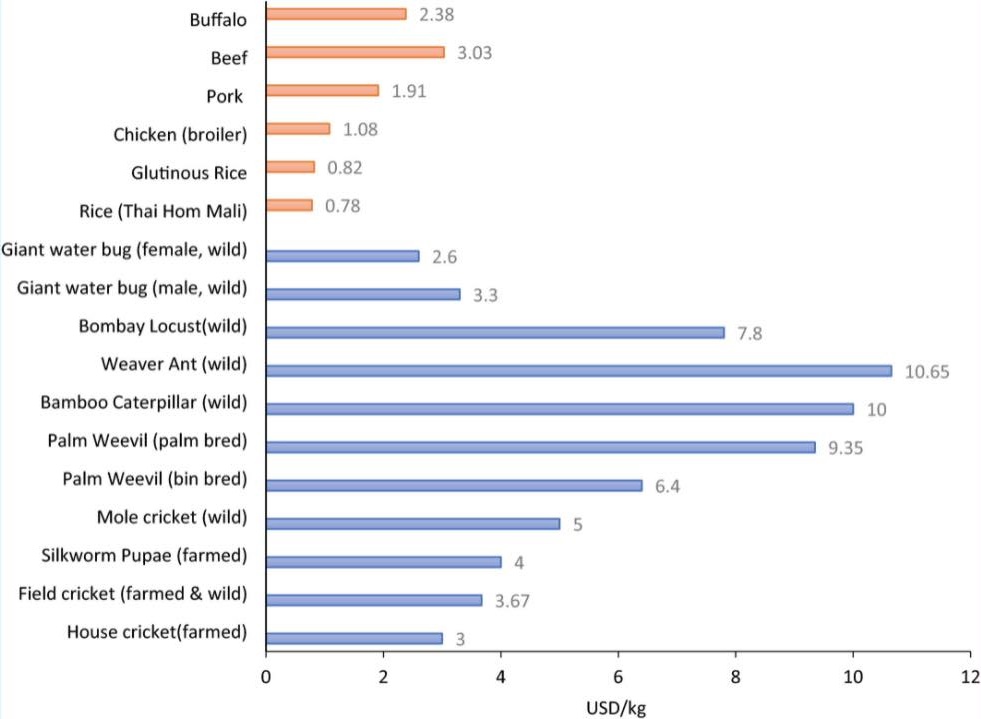[Kl T] Writing Practice Test 1024797
Task 1
You should spend about 20 minutes on this task.
The map and chart below show the information for the global willingness to eat insect products and the current price for certain food available on the market place.
Write a report for a university, lecturer describing the information shown below.
Summarise the information by selecting and reporting the main features and make comparisons where relevant.
You should write at least 150 words.


The map and chart below demonstrate the statistics of global willingness to eat insects based on products and the current price of certain food available in the marketplace. As we can see on the map, three countries are Mexico (71%), Peru(58%), and Thailand(56%) with the green colour which is among the highest percentage of eating insect willingness. The country with the lowest percentage of willingness is Japan with 21%. The rest is having a low percentage of willingness may be due to their culture and their usual fear of insects. Moving to the price chart under the map, we can clearly see that the weaver ant (wild) is the product with the highest price per kilogram. On the other hand, rice (Thai Hom Mali) has the cheapest price on the market at just 0.78$ per kilogram. The price of insect is much higher than normal meat. Perhaps, it is also a factor that many countries do not have the will in trying them.
Task 2
You should spend about 40 minutes on this task.
Write about the following topic.
To meet the growing need for food to support an increasing population, a country should make use of edible insects as a food source. However, some people believe that insects are not only unhealthy but harvesting them will also negatively affect nature. What are the benefits and drawbacks of eating insects?
Give reasons for your answer and include any relevant examples from your own knowledge or experience.
You should write at least 250 words.
There is an idea to turn insects into edible food sources to serve the increasing population's food needs. Nevertheless, some people think that insects are not only unhealthy but harvesting them will also negatively affect nature. The idea of unhealthy insects may come from cockroaches or fleas, they both stick with the bad images in human daily activities. For example, cockroaches can ruin your food because of their unsanitary habitat. Fleas appear when you have a filthy mattress and they can cause itchy and rash over your body. Moreover, the most frequent case of having a negative effect on nature insects is caterpillars. Caterpillars cause extensive damage to the leaves and fruits of crops they feed on. Yet, not all of them are unhealthy and bad for nature.
It is said that insects are a great source of nutrients. They contain rich protein and iron. For instance, one 3.5-ounce of grasshopper typically contains between 14 and 28 grams of protein. Insect feeding is energy efficient compared to other animals and it also demands the smallest land to be kept. This helps to save energy, reduce gas emissions and spare enough space for the growing population.
In conclusion, insects are neither bad for your health and nature nor supply nutrients for your body and save nature based on the choice of edible insects. I believed that choosing the right recommended species that is not poisonous and has a high nutrient level to bring them to our daily diets is the appropriate solution for our future.
Community’s feedback
Sorry! We couldn't find any contents.




